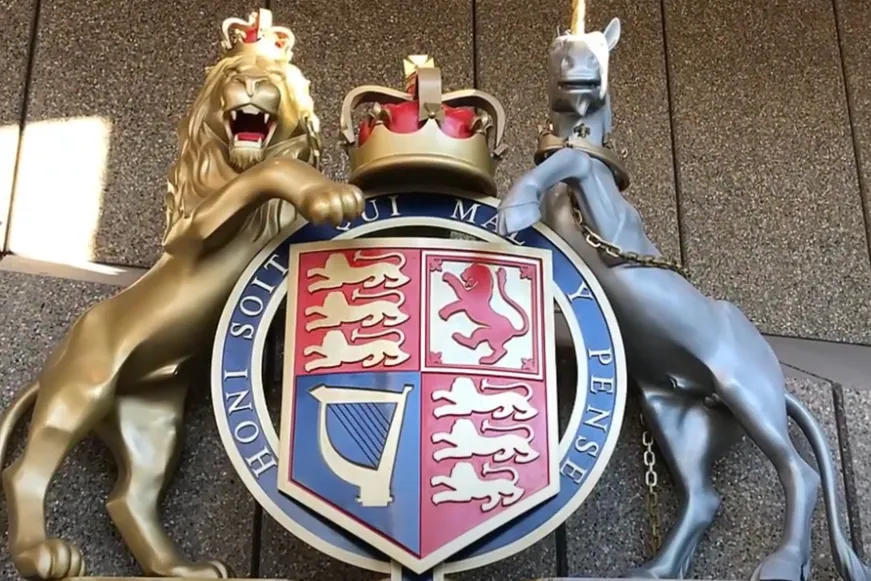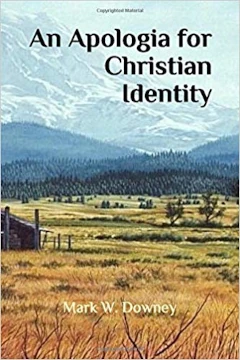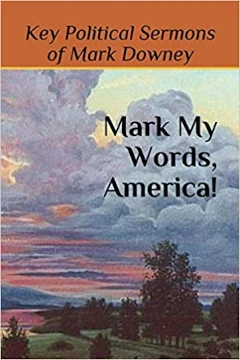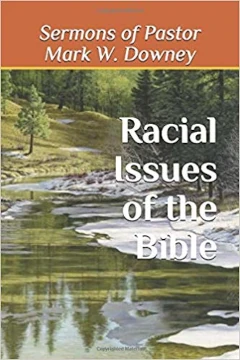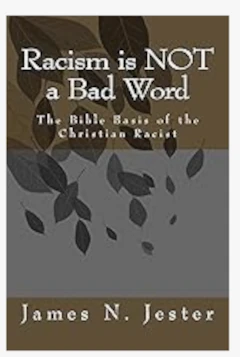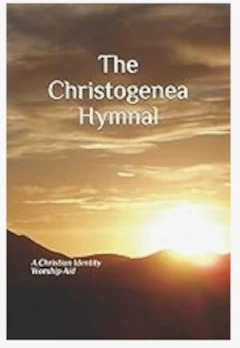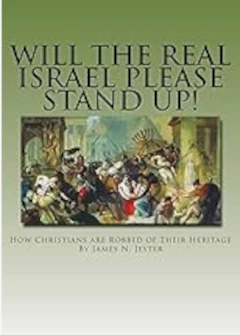Great Britain's Chaos - Part 4
The Pathway to Democracy . THE WORLD CHANGED TO ANGLO-JEWRY DEMOCRACIES
THE PATHWAY TO DEMOCRACY
Copied from the sermon notes of Pastor Don Elmore
August 7, 2022
Scripture Reading: Deuteronomy 28:48 “Therefore shalt thou serve thine enemies which the LORD shall send against thee, in hunger, and in thirst, and in nakedness, and in want of all things: and He shall put a yoke of iron upon thy neck, until He have destroyed thee.”
This is the last part of this current series. Great Britain was in complete chaos. John Knox was one of the founders that converted Scotland from the Church of England to Presbyterianism in the 1500s. It eventually became Scotland’s state church.
The four Stuart kings wanted to be the head and rule the new Protestant church of Scotland, like they did the Church of England. King James I, a skillful politician and a suspected homosexual, made a balanced compromise between Calvinistic doctrine and episcopal practice.
But after his death, his son, King Charles I began to upset this by introducing the kind of liturgical practice used in the English church. Along with the Archbishop of Canterbury, William Laud, he introduced a slightly modified version of the Anglican Book of Common Prayer. When this was suddenly introduced in the Presbyterian Church, it led to an outbreak of rioting. Shortly thereafter, the Scots wrote and signed a National Covenant of 1638. This eventually led to the fighting of the Bishop’s War.
In the ensuing civil wars, the Scots Covenanters at one point made common cause with the Puritan English parliamentarians—resulting in the Westminster Confession of Faith being agreed by both. Peace didn’t come until the “Glorious Revolution” of 1688. There were 50 years of “the killing time” from the National Covenant until there was finally a time of tolerance.
So, as a result of this reason and several others, there were:
- Three civil wars;
- Wars with the Protestant Puritan Parliament against the Protestant/Catholic Royalty,
- Wars with England fighting the Catholics of Ireland,
- Execution of a king,
- One king in exile but retained king by two of the kingdoms of Great Britain and several of her colonies,
- Commonwealth,
- Parliamentary rule,
- Two Lord Protectors,
- Abdication by an inept ruler and a Catholic king,
- Restoration of the Monarchy,
- Bloodless invasion of foreign forces to take over the throne,
- No legitimate child available to become king or queen, and
- Jews allowed back into the country after 400 years to make loans with usury to them.
There was bloodshed, murder, torture, executions, going from a very strict moral code to a very loose one, the reentrance of the usury Jewish bankers, bubonic plague, London being seriously burnt, sending conquered foes as slaves or indentured servants to Virginia, Massachusetts, New England, Maryland, Pennsylvania, South Carolina, Antiqua, Barbados and Bermuda. The times were very tumultuous.
And it was a time of great change. It changed the political government and the social climate, while there were many economic struggles. It was a period of great chaos.
THE SEVEN STUART KINGS AND QUEENS (1603-1714)
- King James VI and I (1603–1625);
- King Charles I (1625–1649);
- THE REPUBLIC OF ENGLAND (1649-1660): King Charles I was beheaded in 1649, which suspended the Monarchy. Charles II, his son, was the next in line to rule in England; escaped to France and Holland in exile. The Puritan Parliament ruled first, then the Puritan Oliver Cromwell took over, then his inept son, Richard, ruled for a combined total for the three non-monarchy rulers--11 years. Cromwell, a Calvinistic Judeo-Christian, was financed by Jews in Amsterdam, Holland. One of financers, Manasseh ben Israel (Jew) convinced most Puritans that the Jews should be given the permission to settle in England and thus hasten the Messiah’s coming. The Monarchy was restored when Charles II was called back by the English Masons with a deal made with the Amsterdam Jews. Charles II became king in 1660 after spending most of his time in exile in Holland.
- King Charles II (1660–1685);
- King James VII and II (1685–1688): The throne was abdicated after a bloodless invasion of forces from the Netherlands. King William III, with a huge loan from a Jewish financier, became part of a Constitutional Parliamentary Monarchy along with his wife, as the new government. The Jews became controllers of Great Britain. The Bank of England began six years after the invasion.
- King William III and II (1688–1702)
- Queen Mary II (1688–1694);
- Queen Anne (1702-1714)
SHORT GENEALOGY OF THE STUART FAMILY:
1. James I of England m. Anne of Denmark
2. Charles I, son of James I m. Henrietta Maria of France
3. Charles II, son of Charles I m. Catherine of Braganza, Portugal. King Charles II fathered many illegitimate children by numerous mistresses but had no legitimate children.
4. James II, son of Charles I m. Anne Hyde of England and after her death m. Mary of Modena, Italy. King James II fathered many illegitimate children by numerous mistresses. Had two daughters by Anne and a son by Mary. James Francis Edward Stuart, son of James II and Mary of Modena, was baptized as a Catholic, and this led to James II abdication of the throne.
5. and 6. Mary II, daughter of King James II m. William III of Orange, Netherlands whose uncle and father-in-law was King James II
7. Anne, daughter of James II m. Prince George of Denmark; died childless
The seven Stuart king and queens married spouses from Denmark (2); France (1); Portugal (1); Italy (1); Netherlands (1) and England (2); one was remarried.
HOW DID THEIR REIGNS END?
- James I of England; died of a stroke.
- Charles I died of a beheading.
- Charles II died of ulcers and complications.
- James II, last Roman Catholic king; abdicated the throne and died in France of a cerebral hemorrhage.
- and 6. William III died of pneumonia while Mary II died of smallpox.
- Anne died of a stoke—had 18 pregnancies; five stillborn; eight miscarriages; four died in infancy; one died at age 11; she died with no surviving children.
THE REIGN OF KING JAMES II
With the death of the two Cromwell’s, father and son, the Jews were understandably nervous about the fact of a marked revival of anti-Jewish sentiments. They were let back in by Oliver after being banished for almost four centuries. And now he was dead.
As early as late 1660s, there were petitions from London to the newly enthroned King Charles II to reverse the policy of the usurers and expel the Jews. They accused the Jews of having revived the usury practices of the time before the expulsion of 1290 and that they had planned to buy Saint Peter’s Cathedral and turn it into a synagogue. As a result of these occurrences, the imposition of heavy taxes on the Jews both as individuals and as merchants were requested.
King Charles II refused to act on the petition, as he was in debt to them, and passed it along to the House of Commons. The House of Commons did not act on it either. Four years later, an attempt was made by individuals to exploit a measure designed primarily to repress Christian nonconformity as a means of blackmailing the Jewish community into paying protection money to avoid persecution. The Jews protested and the Council responded that no orders had been given to disturb the Jews and that they could continue to live as before.
GREAT BRITAIN CHANGED BEFORE AMERICA DID
Most Americans do not know that their mother country, i.e. England, had a Bill of Rights 100 years before they did. And it came mainly from the thoughts of the same man – Enlightenment leader John Locke. These ideas reflected those of the political humanist philosopher and they quickly became popular in England. It also sets out certain constitutional requirements of the Crown to seek the consent of the people, as represented in Parliament.
The Glorious Revolution was a bloodless coup that took place from 1688-1689, in which Catholic King James II of England was deposed and succeeded by his Protestant daughter Mary II and her Protestant Dutch husband, Prince William III of Orange, Neverlands. The deposed king was William III’s uncle and father-in-law.
The infection of the illusion that the people could now rule was spread to the American colony. During this time, the merchants and bankers (Jews) finally solidified their control of England. The Revolution had:
- A Bill of Rights,
- A new king and queen with very little power, and
- A new privately owned central bank.
This new bank—the central Bank of England—was the first of its kind.
This Jewish owned private bank gave the illusion of freedom, but it was accompanied by a guarantee of slavery in the same outline as it was given in the Protocols of the Learned Elders of Zion. It was not a “glorious” revolution for all Great Britain; for it was glorious for the Jewish bankers.
In 1685, King Charles II died and his Catholic brother, James II became King. The Dutch Jewish cabalists would not accept England’s probable return to Catholicism under King James II. So, they had their political agent in Amsterdam, William of Orange, a member of the Royal Family of England, challenge James’ right to the throne.
In 1688, William landed in England with Dutch troops and English mercenaries and took the throne as King William III. William was over a million guilders ($60,000,000 in today’s dollar) in debt to the Jewish Amsterdam bankers and he offered his services to pay off his debt. In 1694, William III and the English government chartered the Bank of England to the Jewish owners.
This first national bank was funded by bankers from Amsterdam who loaned England 1.2 million pounds at 8% interest. The fact that England was suffering economic hard times was the government’s hidden motivation to grant the charter that created the bank of England. The Jewish Amsterdam bankers wanted to end their vulnerability to the papal armies on the continent by relocating to the island nation of England. So, the center of world banking was moved from Amsterdam, Holland to London, England.
WHO WAS WILLIAM III?
King Charles I married Henrietta Maria of France; their daughter, Mary Stuart married William II of Orange, Neverlands; their son William III married Mary II, daughter of King James II and Anne Hyde.
Mary Stuart, Charles II and James II were all siblings of Charles I and Henrietta Maria. King James II was uncle and father-in-law to William III. Mary II’s mother died and her father, James II married Mary of Modena, Italy and had James Francis Edward Stuart who many (mostly Catholics) complained that he was the rightful heir.]
The Glorious Revolution arose from King James II’s attempt to expand freedom of worship for Catholics in opposition to the desires of the Protestant majority. James II had secretly turned Catholic about 10 years before the Glorious Revolution.
The last straw was reached after his first wife, Anne Hyde, who was a Protestant, died, and then he married a young, teen-age Catholic from Italy. King James II had two Protestant girls with his first wife. One of their Protestant daughters, Mary II, remained the rightful heir to the English throne.
Then in 1688, King James II had a son, whom he vowed to raise as a Catholic. Fear soon arose that this change in the line of royal succession would result in a Catholic dynasty in England. When King James II baptized his son, James Francis Edward Stuart, into the Catholic church, the Protestants (and Jews) became enraged. And that was the action that caused the Bill of Rights to be written.
The question of James Francis Edward Stuart became a controversial issue because he was now the rightful heir to the throne. But the Bill of Rights excluded him from the line of succession because he was baptized Catholic and would be raised Catholic. This was seen by some, mainly Catholics, as biased and unfair; while others felt it was necessary in order to protect the supremacy of the Church of England. There have been followers of James Francis Edward Stuart and his descendants who have argued and protested that the line of the son of James II should be the royalty, not the ones who were the actual kings and queens. They were known as the Jacobites and they fought for him and his descendants for over one hundred years.
Motivated by both politics and religion, the revolution led to the adoption of the English Bill of Rights of 1689 and forever changed how England was governed. As the Parliament gained more control over the previously absolute authority of the royal monarchy, the seeds of modern political demo(n)cracy were sown.
It took many years, but the people of Britain slowly gained more and more of the power (that was what they were to think). For about one hundred fifty years only three percent of the population had the right to vote.
In 1833, the First Reform Act was passed by the Whig Government which gave the vote to the middle class. Thirty-four years later, in 1867, the Conservative Party passed the Second Reform Act masterminded by Benjamin Disraeli (Jew) who was the head of the Party in the House of Commons. This increased the population able to vote again by extending it to sections of the urban working classes. There was still a property requirement to be able to vote, and most working-class people in the countryside still couldn’t, but now the vote was beginning to reach the working class. The Second Reform Act doubled the size of the British electorate in one vote.
Another 17 years later, the Liberal Party passed the Third Reform Act in 1884. This gave the vote to most of the rest of the working classes, including those in the countryside. The Liberals passed it by promising to pass a Redistribution of Seats Act, which they did the following year.
Still, one major group was still being left out, but this changed in 1918 with the Representation of the People Act. This was the Act that gave the vote to women; or at least some women. Specifically, they had to be over 31 years old (which was older than men had to be to vote) and they had to be married. Still, for the fact that women could vote, 1918 was a massive step forward. Women were given the vote on an equal footing to men in 1928. So, it took Britain from 1688 till 1928 to become a full democracy—just 240 years.
The United States followed closely to what happened in the Isles of Britain, when they were a colony and after they gained their so-called “independence”.
- The President replaced the Monarch;
- Senators replaced the Lords; and
- Representatives replaced Members of Parliament.
The united states started out as a Republic with only certain white men who owned property could vote and hold office. It wasn’t until after the War between the two nations, Union and Confederate States of America, that the black man received the right to vote. Then in 1920 most of the women got the right to vote. It took until the 1960s that America became closer to a full democracy.
There is a big difference between the two countries—England and America. England still has an almost “no power” monarchy. But every politician in Great Britain must take an “oath to the Crown” while in America they must take an “oath to the constitution.” The crown is the last bulwark against tyranny in Great Britain.
But are the people the ones that have the power in a demo(n)cracy or is it the Jewish bankers?
THE WORLD CHANGED TO ANGLO-JEWRY DEMOCRACIES
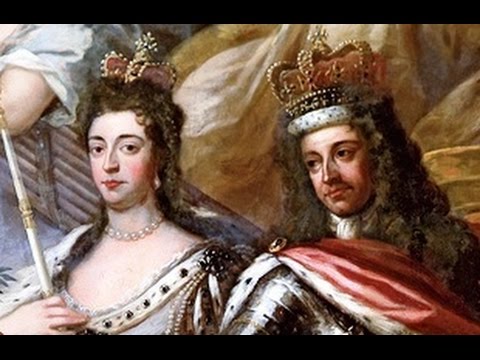 This government of Great Britain changed from absolutism of the king, to a limited monarchy, to a major parliament with a no-power monarchy. Between 1650 and 1775, many thousands of Scots were banished to the American colonies for political, religious or criminal offenses. An additional 1700 Scots were expelled as enemies of the state after the Covenanter risings, and 1600 men, women and children were banished as a result of the Jacobite rebellions in 1715 and 1745.
This government of Great Britain changed from absolutism of the king, to a limited monarchy, to a major parliament with a no-power monarchy. Between 1650 and 1775, many thousands of Scots were banished to the American colonies for political, religious or criminal offenses. An additional 1700 Scots were expelled as enemies of the state after the Covenanter risings, and 1600 men, women and children were banished as a result of the Jacobite rebellions in 1715 and 1745.
King William III of the Netherlands and Queen Mary II of England
Francisco Suasso, a Sephardic Jew, was born into wealth. His father, Antonio, was a successful banker. Although the family had been driven from Spain, Antonio maintained good relations with King Charles II, loaning him funds in 1672, when he was defending Spain’s possessions in the Netherlands from a French invasion.
In the meantime, Francisco, upon the death of his father in 1685, inherited half of his estate, which was largely made up of shares of the Dutch East India Company. Like Antonio before him, Francisco was politically astute as well as rich, and it was to him who William of Orange turned to in 1688 when he was preparing to invade England, intending to overthrow the king, his father-in-law, the Catholic King James II.
Francisco provided the future William III of Britain with a loan of two million guilders, an astronomical sum at the time. Francisco’s assistance to the crown went further, with him taking responsibility for other elements of the invasion, including providing for the transport of Swedish and Pomeranian troops, sent by the king of Sweden to assist William in the operation. This Suasso did with the assistance of his then-father-in-law Manoel Texeira, in Hamburg.
Other Dutch Jews similarly assisted William and hoped for his success, even holding a special service at the Portuguese Synagogue the day after he sailed. They not only expected his conquest to lead to an improvement of conditions for their Jewish brethren in England but expected it to be beneficial to their own ties with the Sephardic communities of the British colonies in the Caribbean, including Barbados and Jamaica.
The Glorious Revolution (1688-89), brought the Netherlandish Protestant William of Orange to the British throne as William III. It was generally welcomed by the Sephardic population of London (a little over 500 families at the time), probably because they thought that, under King William III, London would be transformed into a city where Sephardic Jews would feel as secure and at home as they had long felt in Amsterdam. King William’s expedition to England at the head of his Dutch army was largely financed by Sephardi Jews.
At the end of 1689, the House of Commons passed a resolution ordering the introduction of a bill that would levy a £100,000 tax on the Jewish community over and above their normal taxes. From 1689 to 1691 Jewish merchants were thus obliged to pay a poll tax of £20 a head, twice the amount levied on other so-called merchant strangers.
Still, with the passage of time, more and more Jews, especially the wealthier native-born Sephardim, were participating in English social life with little obstacle, acquiring property, sometimes intermarrying with non-Jewish women and attending the theatre.
As early as 1723, for instance, Jews had come to hold high office in Masonic lodges. The Jews’ position in England at the end of the seventeenth century was superior to that of Jews in other European states – in large part . . . because the state ignored their presence most of the time and left their legal status ill-defined.
In the late fall of 1699, King William III dined with Mr. Medina, a rich Jew. The king was in debt for substantial financial aid in the War of Spanish Succession. Seven months later, in June 1700, Solomon de Medina was knighted by King William III at Hampton Court, the first Jew to be so honored, albeit the last, for a century and a half.
Anglo-Jewry had arrived. Several decades later, Samson Gideon (1699-1762), the London-born son of a Sephardic Jewish immigrant Portuguese trader with the West Indies, having demonstrated his skill as a financier and became the most noteworthy financier and one of the wealthiest men in the country. He was called upon as an adviser to the British government, underwrote the National Debt, and used his fortune to finance the army during the Jacobite Rising of 1745 and the Seven Years War of 1756-63. He had a country house built for himself, married a “Christian” woman (miscegenation) and had his children baptized and brought up in the Church of England.
Among some Whig statesmen the liberal ideas of the time had already led to a growing acceptance of arguments in favor of relieving native-born Jews of the many disabilities to which they were subject – notably exclusion from every public office and virtually all professions.
Nevertheless, it would be incorrect, to infer from this that the Jews of England no longer encountered the old hostilities or were accepted as members of the English nation. The Sephardim of England, like Jews everywhere in early modern Europe, continued to be a distinct national group, with their own peculiar cultural habits, mental outlook, religious customs, historical memories, and future hopes for national redemption.
They also were the only people in the world who were guilty of murdering Christianity’s Savior. Their “holy books” say that Jesus is now in Hell boiling in a cauldron of body fluids. They hate Jesus the Christ. But the British were willing to tolerate the Jews because they owed them so much debt. This was the big sin of the British – they made covenants, married their daughters and their sons, and forgot that the Jews were responsible for the murder of Jesus the Christ and his disciples. They accepted the wicked seed line and rejected the warning given them by our Savior who was assassinated by the evil “vipers.”
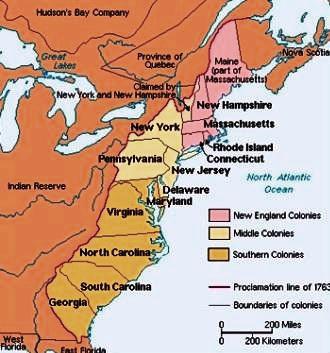
13 colonies of England in the New World
BILL OF RIGHTS OF ENGLAND
The Bill of Rights of England, written in 1688, is a landmark Act in the constitutional law of England that sets out certain basic civil rights and clarifies who would be next to inherit the Crown. It received the Royal Assent on December 16, 1689 and is a restatement in statutory form of the Declaration of Rights presented by the Convention Parliament to William III and Mary II in 1689, inviting them to become joint sovereigns of England.
The Bill of Rights lays down limits on the powers of the monarchy and sets out the rights of Parliament, including the requirement:
- For regular parliaments,
- Free elections, and
- Freedom of speech in Parliament.
It sets out certain rights of individuals including the prohibition of cruel and unusual punishment and confirmed that “Protestants may have arms for their defense suitable to their conditions and as allowed by law”. It also includes no right of taxation without Parliament’s agreement. Furthermore, the Bill of Rights described and condemned several misdeeds of King James II of England.
The Act declared King James II’s flight from England following the Glorious Revolution to be an abdication of the throne. It listed twelve of James’ policies by which he designed to endeavor to subvert the Protestant religion, and the laws and liberties of this kingdom.
King James II’s time in France had exposed him to the beliefs and ceremonies of the Roman Catholic Church; he and his wife, Anne, became drawn to that faith. James took the Catholic Eucharist in 1668 or 1669, although his conversion was kept secret for almost a decade as he continued to attend Anglican services until 1676. Despite his conversion, James continued to associate primarily with Anglicans.
Growing fears of Roman Catholic influence at court led the English Parliament to introduce a new Test Act in 1673. Under this Act, all civil and military officials were required to take an oath in which they were required to disavow the doctrine of transubstantiation and denounce certain practices of the Roman Church as superstitious and idolatrous.
In addition, they were to receive the Eucharist under the auspices of the Church of England. James refused to perform either action, instead choosing to relinquish the post of Lord High Admiral. Thereby his conversion to Roman Catholicism was made public.
King Charles II opposed James’ conversion, ordering that James’ daughters, Mary and Anne, be raised in the Church of England. Nevertheless, he allowed James to marry Mary of Modena, a fifteen-year-old Italian princess.
James II and Mary were married by proxy in a Roman Catholic ceremony on September 20, 1673. Many British people, distrustful of Catholicism, regarded the new Duchess of York as an agent of the Papacy.
In 1683, a plot was uncovered to assassinate both King Charles II and James II and spark a republican revolution to re-establish a government of the Cromwellian style. The conspiracy, known as the Rye House Plot, backfired upon its conspirators and provoked a wave of sympathy for the King and his brother.
So, there were a lot of controversies over who was going to be king of England since Charles II had no offspring; legitimate offspring, that is. Would it be:
- His brother, who was Roman Catholic; or
- His sister, Mary, who was Protestant; or
- Would it be a Commonwealth government once again?
Charles II died and after the failed Rye House Plot, James II took the throne. But with his Catholic beliefs, it didn’t take long till there was a very strong Protestant uprising.
Some members of Parliament, along with the Amsterdam Jews, decided to get William, who was descended from Charles I, and his wife, Mary, who was descended from James II, to lead an invasion from the Neverlands and take over the British throne. William received his financing from Francisco Suasso and other Jews and landed in England at the south-western port of Brixham.
King James II lost his nerve and declined to attack the invading army, despite his army’s numerical superiority. On December 11 James tried to flee to France, but he was captured in Kent; later, he was released and placed under Dutch protective guard. Having no desire to make James a martyr, William let him escape on December 23. James was received by his cousin and ally, Louis XIV in France, who offered him a palace and a pension.
With the assistance of French troops, deposed King James II landed in Ireland in March 1689. The Irish Parliament did not follow the example of the English Parliament; it declared that James II remained King and passed a massive bill of attainder against those who had rebelled against him. At James’ urging, the Irish Parliament passed an Act for Liberty of Conscience that granted religious freedom to all Roman Catholics and Protestants in Ireland. James worked to build an army in Ireland, but was ultimately defeated at the Battle of the Boyne on July 1, 1690. When William arrived, personally leading an army to defeat James and reassert English control, James fled to France once more, departing from Kinsale, never to return to any of his former kingdoms.
CONCLUSION
Thus, the Glorious Revolution marks the:
- End of true monarchical rule in Great Britain,
- Advent of a Parliamentary or republican form of government, and a
- Shift in the justification for government from divine right to popular sovereignty—the Enlightenment idea that the people themselves are sovereign.
The Glorious Revolution of 1688 is considered by some as one of the most important events in the long evolution of the respective powers of Parliament and the Crown in England. The passage of the Bill of Rights stamped out once and for all any possibility of a Catholic monarchy and ended moves towards absolute monarchy in the British kingdoms by circumscribing the monarch’s powers. These powers were greatly restricted.
The King or Queen could no longer:
- Suspend laws,
- Levy taxes,
- Make royal appointments, or
- Maintain a standing army during peacetime without Parliament’s permission.
Since 1689, government under a system of constitutional monarchy in England, and later the United Kingdom, has been uninterrupted. Also, since then, Parliament’s power has steadily increased while the Crown’s has steadily declined.
The Stuart dynasty was over. Anne died with no children as legitimate heirs to the throne. England and Scotland both recognized Queen Anne as their queen, but they differed on who was going to be the next king/queen when she soon died. It took several years of negotiating until they reach a major settlement. In 1707, both Parliaments agreed on a Treaty of Union, which untied England and Scotland into a single political entity, the kingdom of Great Britain. It established the rules of succession as laid down by the Act of Settlement 1701.
Sophia, mother of the next king, died two months before Queen Anne II’s death or she would have been the next queen of England; although for a very short time. But it was Sophia’s son, King George I, who ascended the British throne as Anne’s closest living Protestant relative under the Act of Settlement 1701.
Jacobites attempted, but failed, to depose George and replace him with James Francis Edward Stuart, Anne’s Catholic half-brother. But King George I was King of Hanover in what is now called Germany-Prussia and Great Britain and he did not speak a word of English.
What?! The new King of Great Britain did not speak a word of English?! The Royalty of Great Britain became German. And later, after the German Hanover line switched to the Saxe-Coburg-Gotha line, right before World War I, the Royal family changed their German name from Saxe-Coburg-Gotha to the British name Windsor. Queen Elizabeth is German!
But there was a Jewish Amsterdam connection to the Hanoverian nobility which then relocated into Britain in the person of King George I. This German—now a British King--sent authority back to Prussia allowing for the creation of an occult group which transformed into the Illuminati.
The chaos continued.
House of Stuart Family Tree
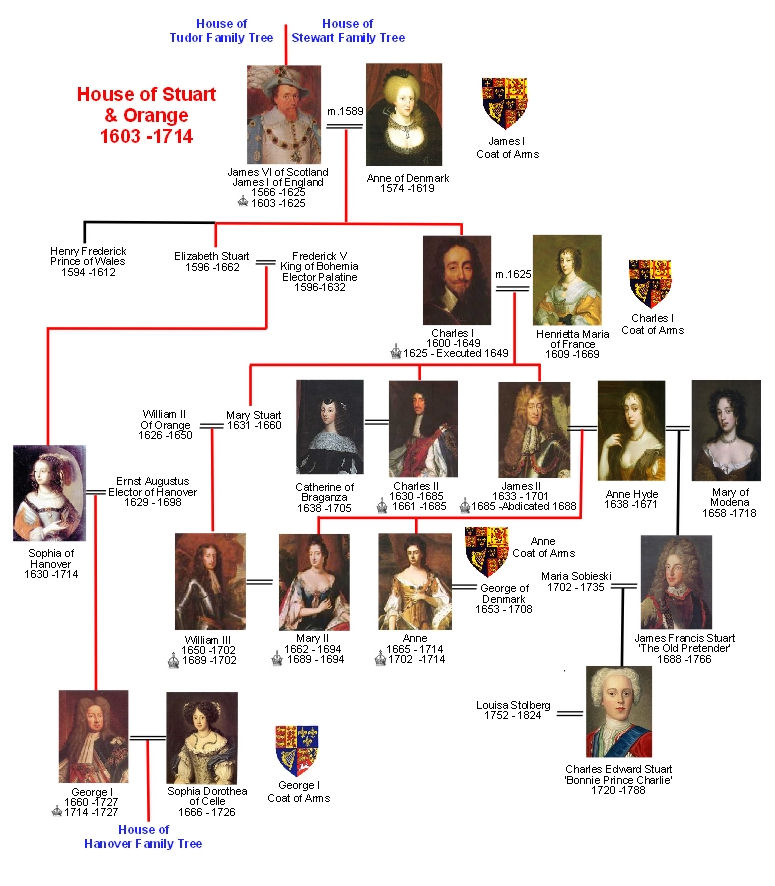
Blessed be the LORD God of Israel.


